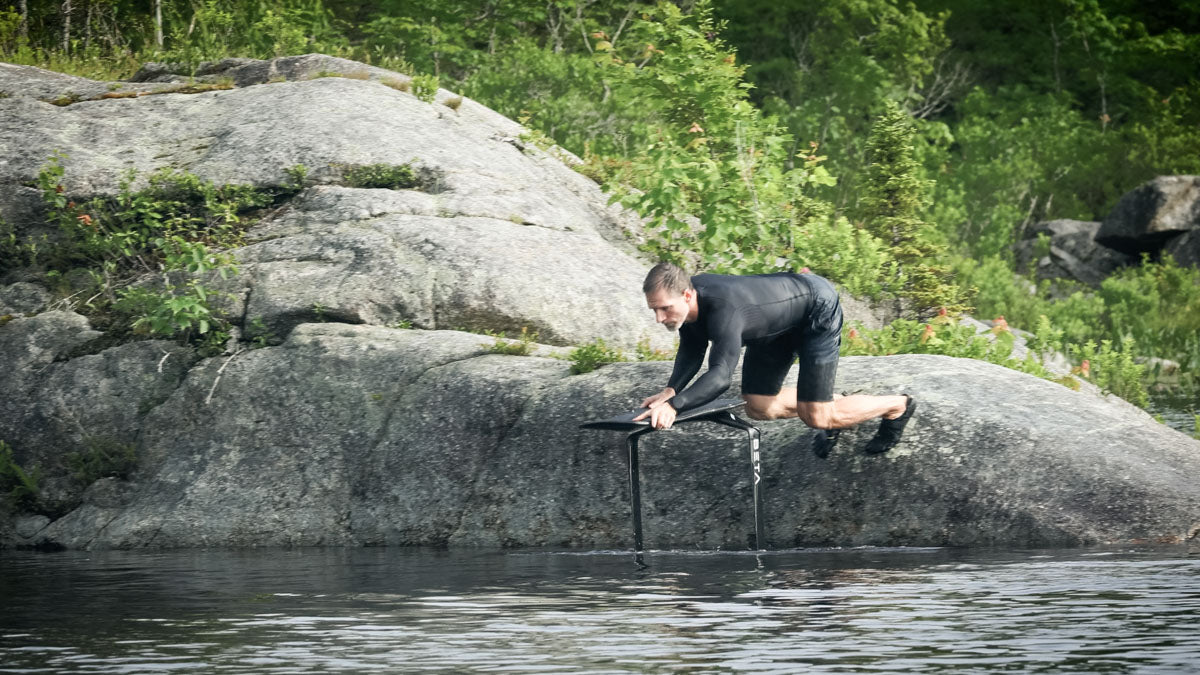Rock Starts

This is one of my favorite lessons — by the time you achieve 1 minute of flight, you've got your knee start dialed in, and you have all the skills you need to launch from natural terrain. And once you take your first leap from a natural shoreline, you'll start to see lakes in a whole new way!
Your First Rock Start
For your first launch, take the time to find an appropriate rock. Try to find one that's the same height as your dock, has good grip, goes straight down, and where there aren't shallow hazards to worry about. The only difference between this and your dock start is that you have to lean out a bit to avoid hitting the tail on the rock. Otherwise it's identical — really you just have to try it!
Damaging Your Foil
The hardest part of this lesson isn't the rock start itself — it's accepting the risk of damaging your foil. You won't break your foil, but there is a risk of getting chips in the trailing edge of the tail. Fortunately it won't have a perceptible impact on the performance of the foil, but I totally get it, these things aren't cheap. Just try to move cautiously, and if you do get a chip, sand down the sharp bits so that it's not a safety hazard.
Advanced Rock Starts
There's a few situations that make for more challenging launches. Rocks that barely protrude above the surface, and areas with shallow hazards, both require a stronger, higher jump. For these, you might want to adopt this modified technique:
Prepare for the launch with your hands in the usual position, but keep them there when you launch, instead of sliding them to the nose of the board. Keeping your hands in the split position allows you to support some of your weight on the board so you can jump higher and farther, and allows you to control the pitch of the board while you're in the air, flying it over any shallow hazards before you land with your knee. The video below shows a more extreme example of trying to clear shallow hazards, while launching from a low platform.
This lesson is really about pushing through a mental barrier — and once you do, the world opens up. The knee start covers almost all features above the water, and depending on your lake, it might be the only start you need to take on your first freefoil. For features below the water's surface, we use the beach start, which brings us to our next lesson.



